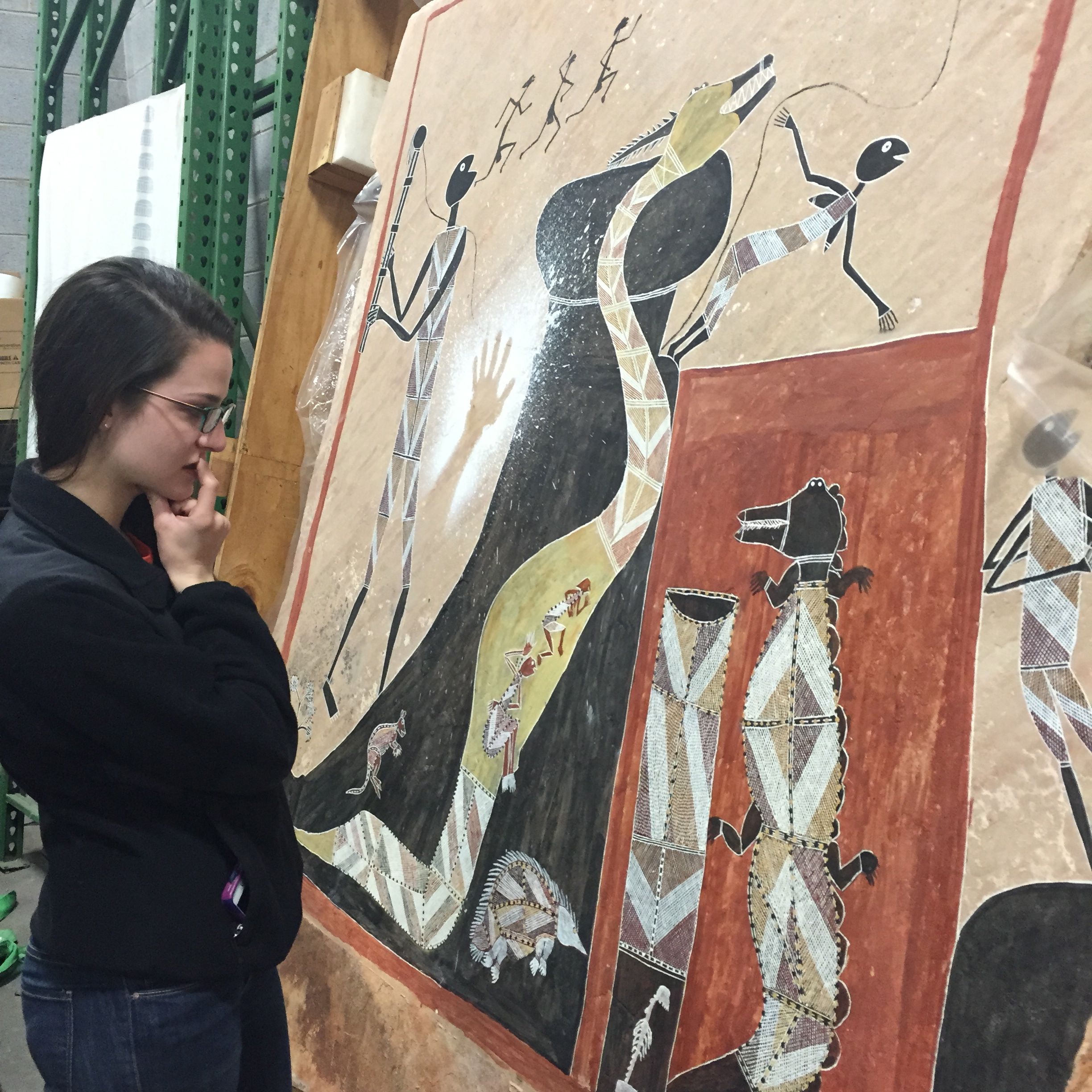U.Va.’s Kluge-Ruhe Aboriginal Art Collection uncrated a huge, one-of-a-kind piece of art last week at the museum’s storage facility. The painted rock, 7 feet tall and more than 5 feet wide, had been in storage since it was given to the University of Virginia by museum founder John Kluge in 1997.
“This object is absolutely unique to U.Va.,” said Margo Smith, director of the Kluge-Ruhe Collection. “The artists came from a long tradition of rock art seen in amazing sites like Injalak Hill near Gunbalanya, but there is no other comparable example in any museum collection in the world.”
U.Va. student Kaitlin LaGrasta, whose academic interests include archaeology and art history and who will be graduating this spring with majors in anthropology and Spanish, examined the large painted rock as part of her research in depictions of Rainbow Serpents in artworks in the Kluge-Ruhe Collection.
“I haven’t had the opportunity to travel to Australia, but the resources provided by the Kluge-Ruhe Collection have allowed me to undertake this project,” LaGrasta said.
Rainbow Serpents are the ancestral beings associated with the creation of other ancestors and sacred sites in Australian Aboriginal cosmology.
LaGrasta was an intern at the Kluge-Ruhe in 2014 through the Institute for Public History Summer Internship program and took a class on Australian Aboriginal art and culture taught by Smith.
Examining the rock was a major undertaking involving a team of professional art handlers, a conservator and a photographer supervised by Kluge-Ruhe Collections manager and registrar Nicole Wade.
“Providing access to this particular work was problematic in that it weighs approximately one ton and is painted on both sides with natural ochres,” said Wade. “We’re fortunate that Kaitlin’s needs dovetailed so well with our own, giving her an opportunity to further her scholarly research, and providing us an opportunity to photograph, rehouse and assess the work’s overall condition.”
LaGrasta received a grant from U.Va. College Council to cover some of the costs of accessing the rock, and the Office of the Vice Provost for the Arts also contributed support to the project.
“As an undergraduate student, I’m excited to have the opportunity to participate in original independent research that not only will prepare me for my professional future, but also will add to the scholarly work on Aboriginal art and support its global appreciation,” LaGrasta said.
Kluge acquired the painted rock from CAZ Gallery in Los Angeles, where artists Bobby Barrdjarai Nganjmirra (1915–1992) and Thompson Yulidjirri (1930-2009) painted it in 1988. Nganjmirra and Yulidjirri were members of the Kunwinjku language group from the community of Gunbalanya in Western Arnhem Land in northern Australia.
The Kluge-Ruhe Collection has many works on bark from this region depicting Rainbow Serpents, and LaGrasta’s research will augment the museum’s understanding and documentation of differing representations of Rainbow Serpents in its collection.
The rock has never been publically exhibited and will remain crated until the Kluge-Ruhe Collection has space to accommodate it.
Media Contact
Article Information
April 6, 2015
/content/kluge-ruhe-collection-unveils-unique-aboriginal-art-student-research

